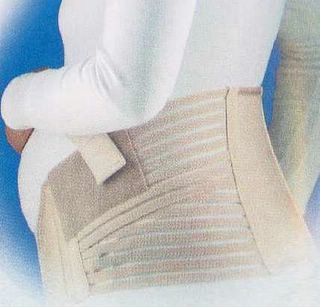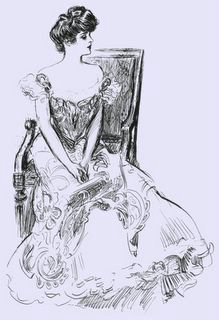G: 1st part
Galloon Lace Any finished lace with a scalloped edge on both sides; used to finish the tops and bottoms of corsets. A silk thread was embedded in the lace for a drawstring effect.
Garde-infante 16c development that flattened the front and back of the pannier designs, and widened them to the sides.
Garter Suspender device on the bottom of the corsets for the attachment of stockings. This is a relatively modern development. Previously, a garter was a circle of ribbon or elastic that went AROUND the upper leg.
Gestation Stays (c19th) A maternity corset with adjustable hip gores, side lacing, and breast openings, to be worn during pregnancy and in order to restore the figure after childbirth.

Gibson Girl (look) Immortalized by artist Charles Dana Gibson in his "Gibson Girls" drawings, this look presented "an upright poise of the shoulders, long sloping bust, with a straight front line and a graceful curve over the hips; the waist held in well below the figure, the chest carried well forward and the shoulders down; the waist long in front and short behind."

Cordón de galón dícese de cualquier cordón acabado con bordes rematados para los extremos del corsé. También era habitual utilizar un hilo acordonado de seda para terminar en lazo.
Garde- Infante desarrollo del siglo XVI que aplanó el pecho y la parte posterior de los diseños y ensanchó los lados.
Marcela accesorio al final de la liga para ajustarse las medias. Se trata de un accesorio moderno ya que en un principio se sujetaban las medias con un círculo de cinta hasta que se puso elástico en el extremo de la media.
Corsé de gestación (siglo XIX) es decir, el corsé de maternidad las sangres cintas ajustables a la cadera, el cordón lateral, y las aberturas del pecho, para ser usada durante embarazo y para restaurar la figura después del parto.
Muchacha de Gibson por Charles Dana Gibson. En sus dibujos de mujeres representaba el ideal de belleza de principios del siglo XX. Esta mirada de Gibson presentaba un equilibrio vertical entre los hombros, el busto, la cintura y una curva agraciada sobre las caderas.

















